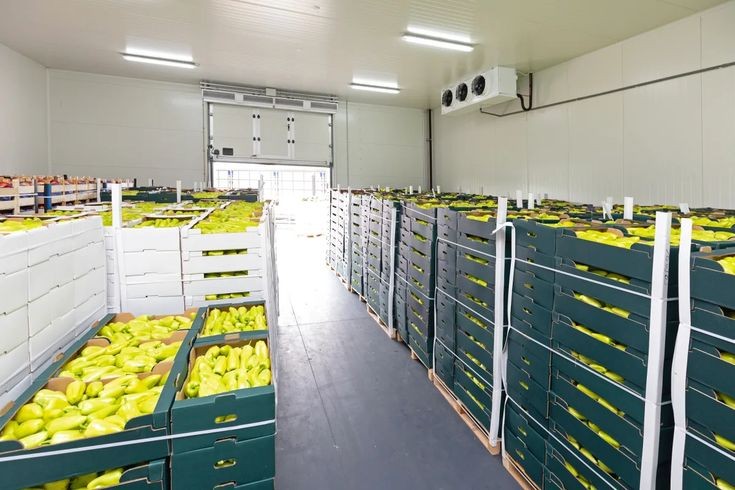In the world of agriculture and food preservation, cold storage for fruits and vegetables is a vital technique. It’s the secret behind that crisp bite into a juicy apple or the vibrant color of your favorite greens, even when they are out of season. In this extensive guide, we will delve deep into the art of cold storage, exploring everything from its benefits to best practices and much more. So, let’s dive right in.
Cold Storage for Fruits and Vegetables
Cold storage for fruits and vegetables involves maintaining a controlled environment with low temperatures and humidity levels. This method helps to extend the shelf life of perishable produce, keeping them fresh and nutritious for an extended period. Let’s explore this further:
Why Cold Storage Matters
Cold storage matters for several reasons:
- Preservation of Freshness: It prevents the natural ripening and decay processes, allowing fruits and vegetables to retain their freshness for an extended time.
- Reduced Spoilage: Cold temperatures slow down the growth of microorganisms that cause spoilage, minimizing food wastage.
- Year-Round Availability: It enables consumers to enjoy seasonal produce throughout the year.
How Cold Storage Works
The process involves placing fruits and vegetables in refrigerated storage units. These units are equipped with precise temperature and humidity controls. The cold temperature inhibits the activity of enzymes responsible for ripening, while controlled humidity prevents dehydration.
Benefits of Cold Storage
The benefits of using cold storage for fruits and vegetables are numerous:
- Extended Shelf Life: Cold storage significantly prolongs the shelf life of produce, reducing the need for frequent restocking.
- Minimized Nutrient Loss: It helps retain the nutritional value of fruits and vegetables, ensuring consumers get the maximum health benefits.
- Cost Savings: Farmers and retailers can avoid losses due to spoilage, making it a cost-effective solution.
Best Practices for Cold Storage
Proper cold storage requires attention to detail. Here are some best practices to ensure success:
Temperature Control
Maintain specific temperature ranges for different types of produce. For example:
- Apples, pears, and citrus fruits: 30-32°F (-1 to 0°C)
- Leafy greens: 32-35°F (0-2°C)
- Tomatoes: 50-55°F (10-13°C)
Humidity Management
Monitor and adjust humidity levels to prevent wilting or excess moisture, which can lead to mold.
Ethylene Management
Ethylene is a natural gas emitted by some fruits. Separate ethylene-producing fruits like apples and bananas from ethylene-sensitive ones like broccoli and lettuce to prevent premature ripening.
Proper Packaging
Use appropriate containers and packaging materials to maintain freshness and prevent moisture loss. Vacuum-sealed bags or containers with adjustable vents can be helpful.
FAQs (Frequently Asked Questions)
Q: Can I use a regular refrigerator for cold storage?
Yes, you can, but it’s best to use commercial refrigeration units designed for cold storage. They provide better temperature and humidity control.
Q: What is the ideal humidity level for cold storage?
The ideal humidity level varies by produce type, but it generally falls between 85% and 95%.
Q: How can I tell if my fruits and vegetables are spoiled in cold storage?
Look for signs of decay, off-putting odors, or unusual texture. Regularly inspect your produce to catch spoilage early.
Q: Can I freeze fruits and vegetables for long-term storage instead of cold storage?
Yes, freezing is an option for long-term storage, but it may alter the texture and taste of some produce.
Q: Are there any environmental concerns with cold storage?
Energy consumption is a consideration, as cold storage requires electricity to maintain low temperatures. Using energy-efficient systems can mitigate this impact.
Q: Are there any fruits or vegetables that should not be stored in cold storage?
Yes, some produce, like bananas and avocados, should not be stored in cold storage as it can negatively impact their quality.
Conclusion
Cold storage for fruits and vegetables is a game-changer in the world of agriculture and food supply. It not only helps in reducing food wastage but also ensures that consumers have access to fresh and nutritious produce year-round. By following best practices and understanding the nuances of cold storage, you can reap its benefits and enjoy the flavors of your favorite fruits and vegetables whenever you please.
Remember, the key lies in maintaining the right temperature and humidity levels while preventing ethylene-induced ripening. Now that you’ve learned the essentials of cold storage, it’s time to put this knowledge into practice and savor the freshness of your favorite produce





